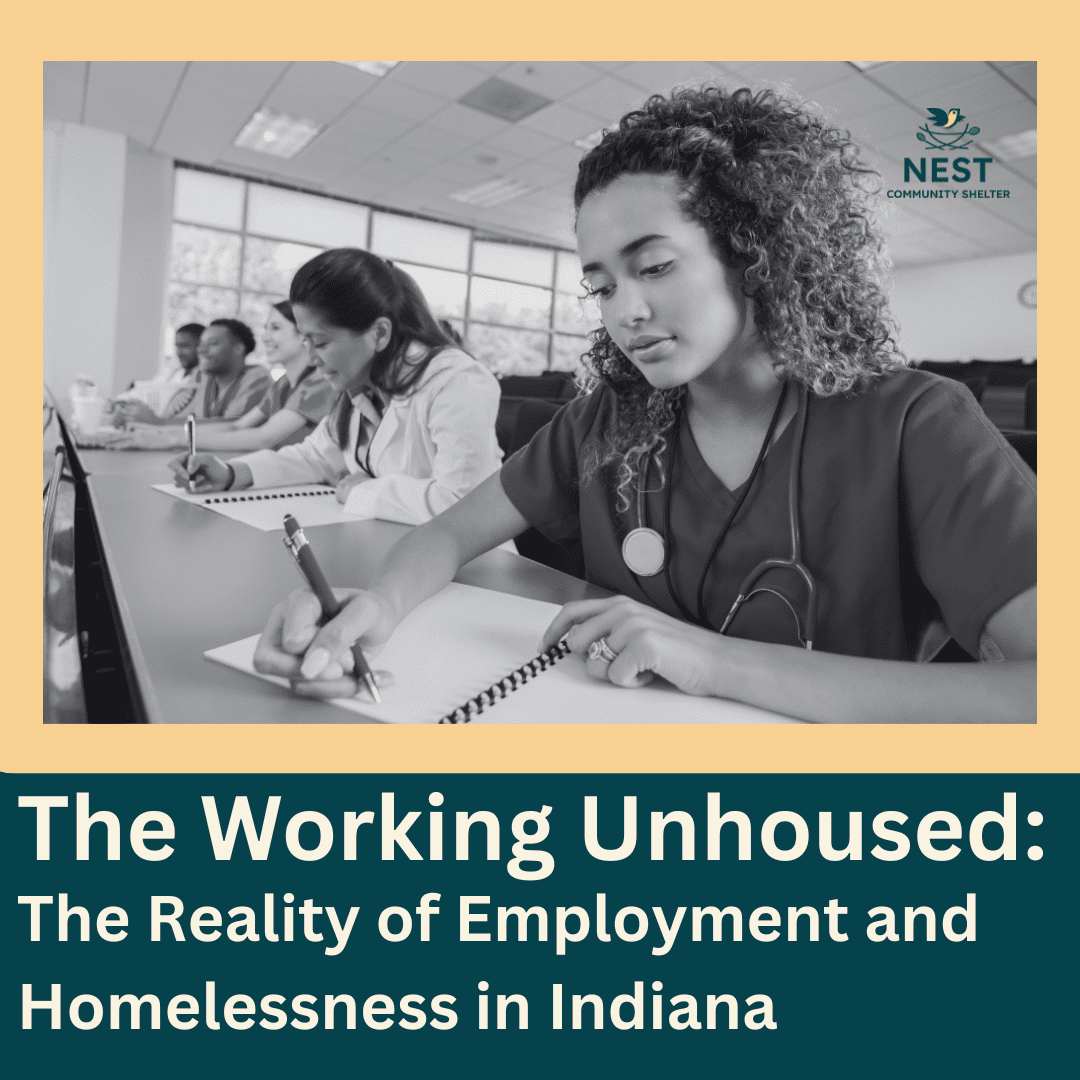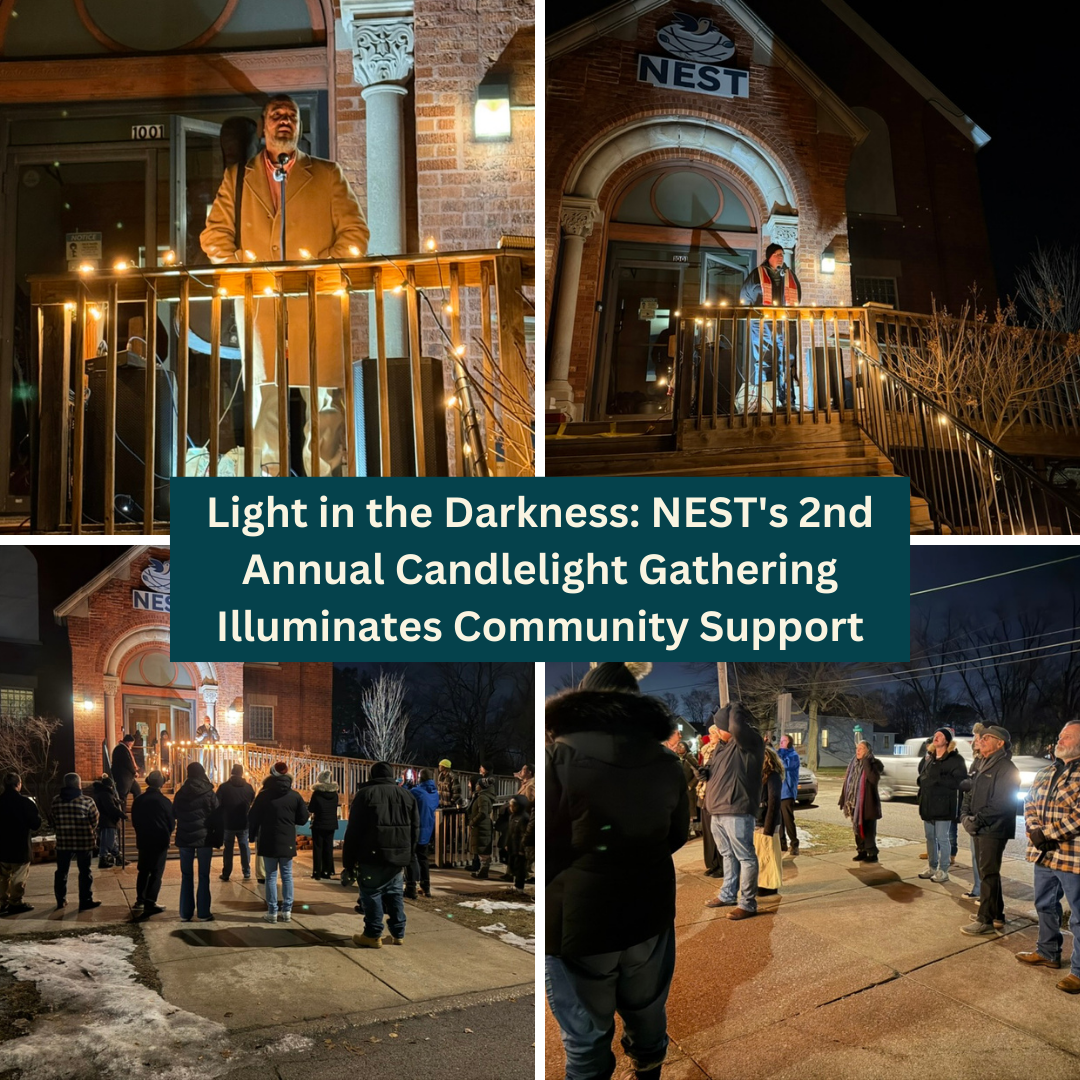
Earlier in the spring, we addressed the persistent myth that unhoused individuals don’t work. The reality couldn’t be further from the truth, as our blog post showed. (You can read the post here.) Many of our neighbors sleeping in shelters or on the streets are employed, sometimes holding multiple jobs, yet still cannot afford a place to call home. This is a mathematics story that doesn’t add up for many in our community and across the United States.
The Working Homeless: Breaking Down the Numbers
According to data from the United States Interagency Council on Homelessness, between 40 and 60 percent of people experiencing homelessness in the United States have a job. Still, housing remains unaffordable because wages have not kept up with rising rents. In simple terms, up to six out of every ten people experiencing homelessness are working. To further this fact, many of the unhoused guests we see at Nest are actively working.
A 2021 study from the University of Chicago estimates that 53 percent of people living in homeless shelters and 40 percent of unsheltered people were employed, either full or part-time, during the period they were observed as homeless between 2011 and 2018. These are our neighbors who stock our grocery shelves, care for children and older adults, serve our food, and clean our offices. They work hard, yet they still cannot afford housing.
The Impossible Mathematics of Minimum Wage in Indiana
So if you’re wondering how that happens, let’s start here: Indiana’s minimum wage is $7.25 per hour, the same as the federal minimum wage, and was last increased in 2009. That’s 16 years without an increase, while the cost of everything, especially housing, has skyrocketed.
In Indiana, the Fair Market Rent for a two-bedroom apartment is $1,153 per month. To afford this without spending more than 30 percent of income on housing, the standard measure of affordability, full-time Hoosier workers need to earn $22.18 per hour, according to the 2025 Out of Reach report published by the National Low Income Housing Coalition and Prosperity Indiana.
The gap is wide, more than triple the minimum wage: $22.18 versus $7.25.
Let’s do the math another way. Hoosiers working at the minimum wage must have 3.1 full-time jobs or work 122 hours per week to afford a two-bedroom apartment. The 122 hours required to work each week to afford basic housing translates to 17 hours a day, every day. Keeping in mind, this only covers rent, not utilities, and the cost of living.
There are only 24 hours in a day. Working 17 hours a day leaves just seven hours for sleep, personal care, family time, commuting, and everything else that makes us human. It’s not just difficult, it’s mathematically impossible, miserable, and inhumane.
It’s Not Just Minimum Wage Workers
The housing crisis in Indiana extends far beyond those earning minimum wage. Indiana’s average renter wage is $18.05 per hour, which is $4.13 less than the state’s housing wage. Even Hoosiers earning significantly more than minimum wage cannot afford the rent.
Fourteen of Indiana’s top twenty most common occupations pay median wages that are less than the state’s Housing Wage in 2025. The top occupations paying less than Indiana’s Housing Wage employ 810,610 working Hoosiers, meaning 76 percent of the total employed in the state’s 20 largest occupations. Simply put, each of these Hoosiers has a job, yet struggles for housing security, and in some cases, is not able to secure housing. Think about that. Three-quarters of workers in Indiana’s most common jobs cannot afford a modest two-bedroom apartment on their wages alone.
Indiana’s median renter household income of $43,672 now ranks dead last in the Midwest, making our state’s affordability crisis even more acute.
Substandard Housing and Precarious Security
For those who manage to find housing despite insufficient wages, the reality often involves substandard living conditions and constant housing insecurity. When families are forced to spend far more than 30 percent of their income on housing, and many do in our community, they’re left with impossible choices: food or rent, medicine or utilities, car repairs or keeping the roof over their heads.
This financial strain means that any small emergency, a car breakdown, a medical bill, or reduced work hours can push a working family into becoming unhoused. The housing they can afford is often in poor condition, with landlords who know that tenants living paycheck to paycheck have little power to demand repairs or improvements, and with no financial cushion, these families live with the constant fear of eviction..
What This Means for Our Community
When we see someone is unhoused, we must understand that employment alone is not the solution. Even if people are working full-time, they may not be able to afford housing on a minimum wage. The system itself is broken in our community and across the U.S.
The people we serve at our shelter are not lazy. They are not unmotivated. They are caught in an economic trap where wages haven’t kept pace with housing costs for more than a decade and a half. They are working, and it still isn’t enough.
Understanding and Action
Understanding these realities shows that this is not a moral failing of individuals; this is a systemic failure to ensure that work pays enough to afford basic needs like housing.
Nest exists because the gap between wages and housing costs has become too wide for many working individuals in our community to bridge. Every person we serve deserves to be seen for who they are: someone trying to survive in an economic system that has made basic housing unaffordable for working people.
As we continue our work to provide shelter and support, we also advocate for systemic changes: wages that reflect the true cost of living, increased affordable housing stock, and policies that recognize housing as a human right, not a luxury that only some can afford.
The next time you wonder why someone with a job utilizes our shelter, remember these numbers. Remember that 122 hours of work per week is impossible for almost everyone. Remember that being employed and being housed have become, for far too many Hoosiers, two separate realities.



